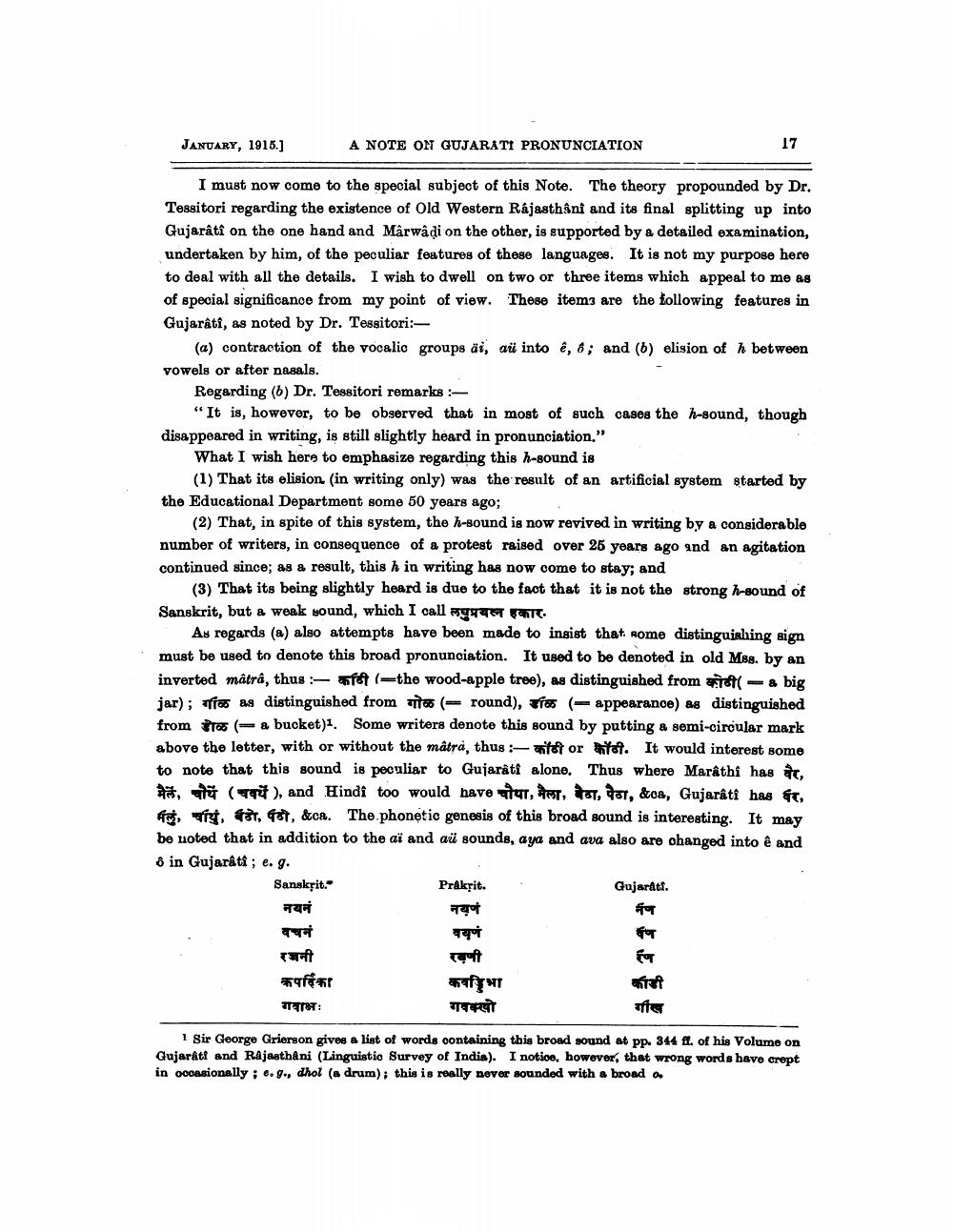________________
JANUARY, 1915.]
I must now come to the special subject of this Note. The theory propounded by Dr. Tessitori regarding the existence of Old Western Rajasthani and its final splitting up into Gujarâtî on the one hand and Mârwâḍi on the other, is supported by a detailed examination, undertaken by him, of the peculiar features of these languages. It is not my purpose here to deal with all the details. I wish to dwell on two or three items which appeal to me as of special significance from my point of view. These items are the following features in Gujarati, as noted by Dr. Tessitori:
A NOTE ON GUJARATI PRONUNCIATION
(a) contraction of the vocalic groups äi, au into ê, 6; and (b) elision of h between vowels or after nasals.
Regarding (b) Dr. Tessitori remarks:
"It is, however, to be observed that in most of such cases the h-sound, though disappeared in writing, is still slightly heard in pronunciation."
What I wish here to emphasize regarding this h-sound is
(1) That its elision (in writing only) was the result of an artificial system started by the Educational Department some 50 years ago;
Sanskrit.
नयनं
(2) That, in spite of this system, the h-sound is now revived in writing by a considerable number of writers, in consequence of a protest raised over 25 years ago and an agitation continued since; as a result, this h in writing has now come to stay; and
(3) That its being slightly heard is due to the fact that it is not the strong h-sound of Sanskrit, but a weak sound, which I call g
As regards (a) also attempts have been made to insist that some distinguishing sign must be used to denote this broad pronunciation. It used to be denoted in old Mss. by an inverted mâtrâ, thus:- fet (the wood-apple tree), as distinguished from art - a big jar); as distinguished from (round), (-appearance) as distinguished from(a bucket). Some writers denote this sound by putting a semi-circular mark above the letter, with or without the mâtra, thus:- -afat or fat. It would interest some to note that this sound is peculiar to Gujarati alone. Thus where Marathi has, मैले, चौयें (चवर्षे ), and Hindi too would have चौथा, मैला, बैठा, पेठा, &oa, Gujarati has वर, f, wit, f, 48, &ca. The phonetic genesis of this broad sound is interesting. It may be noted that in addition to the aï and au sounds, aya and ava also are changed into ê and 8 in Gujarâti; e. g.
वचनं
रजनी
waffer
गवाक्षः
17
Prakrit.
नयणं
वयणं
रवणी
कट्टिभा गवक्खो
Gujarati. ffor
For
For
antat after
1 Sir George Grierson gives a list of words containing this broad sound at pp. 344 ff. of his Volume on Gujarati and Rajasthani (Linguistic Survey of India). I notice, however, that wrong words have crept in occasionally; e. g., dhol (a drum); this is really never sounded with a broad o.




